Semantic Networks
John F. Sowa
This is a revised and extended version of an article that was originally written for the Encyclopedia of Artificial Intelligence, edited by Stuart C. Shapiro, Wiley, 1987, second edition, 1992.
A semantic network or net is a graphic notation for representing knowledge in patterns of interconnected nodes and arcs. Computer implementations of semantic networks were first developed for artificial intelligence and machine translation, but earlier versions have long been used in philosophy, psychology, and linguistics.
What is common to all semantic networks is a declarative graphic representation that can be used either to represent knowledge or to support automated systems for reasoning about knowledge. Some versions are highly informal, but other versions are formally defined systems of logic. Following are six of the most common kinds of semantic networks, each of which is discussed in detail in one section of this article.
- Definitional networks emphasize the subtype or is-a relation between a concept type and a newly defined subtype. The resulting network, also called a generalization or subsumption hierarchy, supports the rule of inheritance for copying properties defined for a supertype to all of its subtypes. Since definitions are true by definition, the information in these networks is often assumed to be necessarily true.
- Assertional networks are designed to assert propositions. Unlike definitional networks, the information in an assertional network is assumed to be contingently true, unless it is explicitly marked with a modal operator. Some assertional netwoks have been proposed as models of the conceptual structures underlying natural language semantics.
- Implicational networks use implication as the primary relation for connecting nodes. They may be used to represent patterns of beliefs, causality, or inferences.
- Executable networks include some mechanism, such as marker passing or attached procedures, which can perform inferences, pass messages, or search for patterns and associations.
- Learning networks build or extend their representations by acquiring knowledge from examples. The new knowledge may change the old network by adding and deleting nodes and arcs or by modifying numerical values, called weights, associated with the nodes and arcs.
- Hybrid networks combine two or more of the previous techniques, either in a single network or in separate, but closely interacting networks.
Some of the networks have been explicitly designed to implement hypotheses about human cognitive mechanisms, while others have been designed primarily for computer efficiency. Sometimes, computational reasons may lead to the same conclusions as psychological evidence. The distinction between definitional and assertional networks, for example, has a close parallel to Tulving's (1972) distinction between
semantic memory and
episodic memory.
Network notations and linear notations are both capable of expressing equivalent information, but certain representational mechanisms are better suited to one form or the other. Since the boundary lines are vague, it is impossible to give necessary and sufficient conditions that include all semantic networks while excluding other systems that are not usually called semantic networks. Section 7 of this article discusses the syntactic mechanisms used to express information in network notations and compares them to the corresponding mechanisms used in linear notations.
1. Definitional Networks
The oldest known semantic network was drawn in the 3rd century AD by the Greek philosopher Porphyry in his commentary on Aristotle's categories. Porphyry used it to illustrate Aristotle's method of defining categories by specifying the genus or general type and the differentiae that distinguish different subtypes of the same supertype. Figure 1 shows a version of the Tree of Porphyry, as it was drawn by the logician Peter of Spain (1329). It illustrates the categories under Substance, which is called the supreme genus or the most general category.

Figure 1. Tree of Porphyry, as drawn by Peter of Spain (1329)
Despite its age, the Tree of Porphyry represents the common core of all modern hierarchies that are used for defining concept types. In Figure 1, the genus Substance with the differentia material is Body and with the differentia immaterial is Spirit. The modern rule of inheritance is a special case of the Aristotelian syllogisms, which specify the conditions for inheriting properties from supertypes to subtypes: LivingThing inherits material Substance from Body and adds the differentia animate; Human inherits sensitive animate material Substance and adds the differentia rational. Aristotle, Porphyry, and the medieveal logicians also distinguished the categories or universals from the individual instances or particulars, which are listed at the bottom of Figure 1. Aristotle's methods of definition and reasoning are still used in artificial intelligence, object-oriented programming languages, and every dictionary from the earliest days to the present.
The first implementations of semantic networks were used to define concept types and patterns of relations for machine translation systems. Silvio Ceccato (1961) developed correlational nets, which were based on 56 different relations, including subtype, instance, part-whole, case relations, kinship relations, and various kinds of attributes. He used the correlations as patterns for guiding a parser and resolving syntactic ambiguities. Margaret Masterman's system at Cambridge University (1961) was the first to be called a semantic network. She developed a list of 100 primitive concept types, such as Folk, Stuff, Thing, Do, and Be. In terms of those primitives, her group defined a conceptual dictionary of 15,000 entries. She organized the concept types into a lattice, which permits inheritance from multiple supertypes. The basic principles and even many of the primitive concepts have survived in more recent systems of preference semantics (Wilks & Fass 1992).
Among current systems, the description logics include the features of the Tree of Porphyry as a minimum, but they may also add various extensions. They are derived from an approach proposed by Woods (1975) and implemented by Brachman (1979) in a system called Knowledge Language One (KL-ONE). As an example, Figure 2 shows a KL-ONE network that defines the concepts Truck and TrailerTruck as subtypes of Vehicle.

Figure 2. Truck and TrailerTruck concepts defined in KL-ONE
Figure 2 has nine ovals for concept nodes and nine arrows, which represent different kinds of links. The white ovals represent generic concepts for the types, as distinguished from the shaded oval, which is an individual concept for the instance 18. The oval marked with an asterisk * indicates that Integer is a built-in or primitive type. The concepts Truck and TrailerTruck are defined in Figure 2, but Vehicle, Trailer, WtMeasure, and VolMeasure would have to be defined by other KL-ONE diagrams.
The double-line arrows represent subtype-supertype links from TrailerTruck to Truck and from Truck to Vehicle. The arrows with a circle in the middle represent roles. The Truck node has four roles labeled UnloadedWt, MaxGrossWt, CargoCapacity, and NumberOfWheels. The TrailerTruck node has two roles, one labeled HasPart and one that restricts the NumberOfWheels role of Truck to the value 18. The notation v/r at the target end of the role arrows indicates value restrictions or type constraints on the permissible values for those roles.
The tree of Porphyry, KL-ONE, and many versions of description logics are subsets of classical first-order logic (FOL). They belong to the class of monotonic logics, in which new information monotonically increases the number of provable theorems, and none of the old information can ever be deleted or modified. Some versions of description logics support nonmonotonic reasoning, which allows default rules to add optional information and canceling rules to block inherited information. Such systems can be useful for many applications, but they can also create problems of conflicting defaults, as illustrated in Figure 3.

Figure 3. Conflicting defaults in a definitional network
The Nixon diamond on the left shows a conflict caused by inheritance from two different supertypes: by default, Quakers are pacifists, and Republicans are not pacifists. Does Nixon inherit pacifism along the Quaker path, or is it blocked by the negation on the Republican path? On the right is another diamond in which the subtype RoyalElephant cancels the property of being gray, which is the default color for ordinary elephants. If Clyde is first mentioned as an elephant, his default color would be gray, but later information that he is a RoyalElephant should caused the previous information to be retracted. To resolve such conflicts, many developers have rejected local defaults in favor of more systematic methods of belief revision that can guarantee global consistency.
Although the basic methods of descripton logics are as old as Aristotle, they remain a vital part of many versions of semantic networks and other kinds of systems. Much of the ongoing research on description logics has been devoted to increasing their expressive power while remaining within an efficiently computable subset of logic (Brachman et al. 1991; Woods & Schmolze 1992). Two recent description logics are DAML and OIL (Horrocks et al. 2001), which are intended for representing knowledge in the semantic web (Berners-Lee et al. 2001)  a giant semantic network that spans the entire Internet.
a giant semantic network that spans the entire Internet.
2. Assertional Networks
Gottlob Frege (1879) developed a tree notation for the first complete version of first-order logic  his Begriffsschrift or concept writing. Charles Sanders Peirce (1880, 1885) independently developed an algebraic notation, which with a change of symbols by Peano (1889) has become the modern notation for predicate calculus. Although Peirce invented the algebraic notation, he was never fully satisfied with it. As early as 1882, he was searching for a graphic notation, similar to the notations used in organic chemistry, that would more clearly show "the atoms and molecules of logic." Figure 4 shows one of his relational graphs, which represents the sentence, A Stagirite teacher of a Macedonian conqueror of the world is a disciple and an opponent of a philosopher admired by Church Fathers.
his Begriffsschrift or concept writing. Charles Sanders Peirce (1880, 1885) independently developed an algebraic notation, which with a change of symbols by Peano (1889) has become the modern notation for predicate calculus. Although Peirce invented the algebraic notation, he was never fully satisfied with it. As early as 1882, he was searching for a graphic notation, similar to the notations used in organic chemistry, that would more clearly show "the atoms and molecules of logic." Figure 4 shows one of his relational graphs, which represents the sentence, A Stagirite teacher of a Macedonian conqueror of the world is a disciple and an opponent of a philosopher admired by Church Fathers.

Figure 4. A relational graph
Figure 4 contains three branching lines of identity, each of which corresponds to an existentially quantified variable in the algebraic notation. The words and phrases attached to those lines correspond to the relations or predicates in the algebraic notation. With that corresponcence, Figure 4 can be translated to the following formula in predicate calculus:
( x)(
x)( y)(
y)( z)(isStagirite(x)
z)(isStagirite(x)  teaches(x,y)
teaches(x,y)  isMacedonian(y)
isMacedonian(y)  conquersTheWorld(y)
conquersTheWorld(y)  isDiscipleOf(y,z)
isDiscipleOf(y,z)  isOpponentOf(y,z)
isOpponentOf(y,z)  isAdmiredByChurchFathers(z) ).
isAdmiredByChurchFathers(z) ).
As this formula illustrates, a relational graph only represents two logical operators: the conjunction

and the existential quantifier

. Other operators, such as negation ~, disjunction

, implication

, and the universal quantifier

, are more difficult to express because they require some method for demarcating the
scope 
that part of the formula that is governed by the operator. The problem of representing scope, which Peirce faced in his graphs of 1882, also plagued the early semantic networks used in artificial intelligence 80 years later.
In 1897, Peirce made a simple, but brilliant discovery that solved all the problems at once: he introduced an oval that could enclose and negate an arbitrarily large graph or subgraph. Then combinations of ovals with conjunction and the existential quantifier could express all the logical oprerators used in the algebraic notation (Peirce 1909). That innovation transformed the relational graphs into the system of existential graphs (EG), which Peirce called "the logic of the future" (Roberts 1973). The implication  , for example, could be represented with a nest of two ovals, since (p
, for example, could be represented with a nest of two ovals, since (p q) is equivalent to ~(p
q) is equivalent to ~(p ~q). At the left of Figure 5 is an existential graph for the sentence If a farmer owns a donkey, then he beats it.
~q). At the left of Figure 5 is an existential graph for the sentence If a farmer owns a donkey, then he beats it.

Figure 5. EG and DRS for "If a farmer owns a donkey, then he beats it."
The outer oval of Figure 5 is the antecedent or if part, which contains farmer, linked by a line representing ( x) to owns, which is linked by a line representing (
x) to owns, which is linked by a line representing ( y) to donkey. The subgraph in the outer oval may be read If a farmer x owns a donkey y. The lines x and y are extended into the inner oval, which represents the consequent, then x beats y. Figure 5 may be translated to the following algebraic formula:
y) to donkey. The subgraph in the outer oval may be read If a farmer x owns a donkey y. The lines x and y are extended into the inner oval, which represents the consequent, then x beats y. Figure 5 may be translated to the following algebraic formula:
~( x)(
x)( y)(farmer(x)
y)(farmer(x)  donkey(y)
donkey(y)  owns(x,y)
owns(x,y)  ~beats(x,y)).
~beats(x,y)).
This formula is equivalent to
( x)(
x)( y)((farmer(x)
y)((farmer(x)  donkey(y)
donkey(y)  owns(x,y))
owns(x,y))  beats(x,y)).
beats(x,y)).
For comparison, the diagram on the right of Figure 5 is a
discourse representation structure (DRS), which Hans Kamp (1981; Kamp and Reyle 1993) invented to represent natural language semantics. Instead of nested ovals, Kamp used boxes linked by arrows; and instead of lines of identity, Kamp used variables. But the logical structures are formally equivalent, and the same techniques for representing logic in natural language can be adapted to either notation.
In linguistics, Lucien Tesnière (1959) developed graph notations for his system of dependency grammar. Figure 6 shows one of his graphs for the sentence L'autre jour, au fond d'un vallon, un serpent piqua Jean Fréron (The other day, at the bottom of a valley, a snake stung Jean Fréron). At the top is the verb piqua (stung), from which the words that depend directly on the verb are hanging: the subject (serpent), the object (Jean), and two prepositional phrases. The bull's eye symbol indicates an implicit preposition (à). Every word other than piqua is hanging below some word on which it depends.

Figure 6. A dependency graph in Tesnière's notation
Tesnière has had a major influence on linguistic theories that place more emphasis on semantics than on syntax. David Hays (1964) presented dependency theory as a formal alternative to Chomsky's syntactic notations. Klein and Simmons (1963) adopted it for a machine translation system. Valency theory (Allerton 1982) and Meaning-Text Theory (Mel'čuk 1973; Steele 1990) are two ongoing developments of the dependency approach. The dependency theories have also been strongly influenced by case grammar (Fillmore 1968), which provides a convenient set of labels for the arcs of the graphs (Somers 1987).
Under the influence of Hays and Simmons, Roger Schank adopted the dependency approach, but shifted the emphasis to concepts rather than words (Schank & Tesler 1969; Schank 1975). Figure 5 shows a conceptual dependency graph for the sentence A dog is greedily eating a bone. Instead of Tesnière's tree notation, Schank used different kinds of arrows for different relations, such as  for the agent-verb relation or an arrow marked with o for object. He replaced the verb eat with one of his primitive acts ingest; he replaced adverbs like greedily with adjective forms like greedy; and he added the linked arrows marked with d for direction to show that the bone goes from some unspecified place into the dog (the subscript 1 indicates that the bone went into the same that who ingested it).
for the agent-verb relation or an arrow marked with o for object. He replaced the verb eat with one of his primitive acts ingest; he replaced adverbs like greedily with adjective forms like greedy; and he added the linked arrows marked with d for direction to show that the bone goes from some unspecified place into the dog (the subscript 1 indicates that the bone went into the same that who ingested it).

Figure 7. Schank's notation for conceptual dependencies
Conceptual dependencies were primarily suited to representing information at the sentence level, but Schank and his colleagues later developed notations for representing larger structures, in which the sentence-level dependencies occurred as nested substructures. The larger structures were called scripts (Schank & Abelson 1977), memory organization packets (MOPs), and thematic organization packets (TOPs) (Schank 1982). To learn or discover the larger structures automatically, case-based reasoning has been used to search for commonly occurring patterns among the lower-level conceptual dependencies (Schank et al. 1994).
Logically, Tesnière's dependency graphs have the same expressive power as Peirce's relational graphs of 1882: the only logical operators they can represent are conjunction and the existential quantifier. Even when those graphs have nodes marked with other logical operators, such as disjunction, negation, or the universal quantifier, they fail to express their scope correctly. During the 1970s, various network notations were developed to represent the scope of logical operators. The most successful approach was the method of adding explicit nodes to show propositions. Logical operators would connect the propositional nodes, and relations would either be attached to the propositional nodes or be nested inside them. By those criteria, Frege's Begriffsschrift, Peirce's existential graphs, and Kamp's discourse representation structures could be called propositional semantic networks. In Figure 5, for example, the two EG ovals and the two DRS boxes represent propositions, each of which contains nested propositions.
The first propositional semantic network to be implemented in AI was the MIND system, developed by Stuart Shapiro (1971). It later evolved into the Semantic Network Processing System (SNePS), which has been used to represent a wide range of features in natural language semantics (Shapiro 1979; Maida & Shapiro 1982; Shapiro & Rappaport 1992). Figure 8 shows the SNePS representation for the sentence Sue thinks that Bob believes that a dog is eating a bone. Each of the nodes labeled M1 through M5 represents a distinct proposition, whose relational content is attached to the propositional node.

Figure 8. Propositions represented in SNePS
The proposition M1 states that Sue is the experiencer (Expr) of the verb think, whose theme (Thme) is another proposition M2. For M2, the experiencer is Bob, the verb is believe, and the theme is a proposition M3. For M3, the agent (Agnt) is some entity B1, which is a member of the class Dog, the verb is eat, and the patient (Ptnt) is an entity B2, which is a member of the class Bone. As Figure 8 illustrates, propositions may be used at the metalevel to make statements about other propositions: M1 states that M2 is thought by Sue, and M2 states that M3 is believed by Bob.
Conceptual graphs (Sowa 1976, 1984, 2000) are a variety of propositional semantic networks in which the relations are nested inside the propositional nodes. They evolved as a combination of the linguistic features of Tesnière's dependency graphs and the logical features of Peirce's existential graphs with strong influences from the work in artificial intelligence and computational linguistics. Figure 9 shows a comparison of Peirce's EG from Figure 5 with a conceptual graph (CG) that represents the sentence If a farmer owns a donkey, then he beats it.

Figure 9. Comparison of the EG from Figure 5 with a CG for the same sentence
The most obvious differences between the EG and the CG are cosmetic: the ovals are squared off to form boxes, and the implicit negations in the EG are explicitly marked If and Then for better readability. The more subtle differences are in the range of quantification and the point where the quantification occurs. In an EG, a line of identity represents an existential quantifier ( x) or (
x) or ( y), which ranges over anything in the domain of discourse; but in a CG, each box, called a concept, represents a quantifier (
y), which ranges over anything in the domain of discourse; but in a CG, each box, called a concept, represents a quantifier ( x:Farmer) or (
x:Farmer) or ( y:Donkey), which is restricted to the type or sort Farmer or Donkey. In the CG, the arcs with arrows indicate the argument of the relations (numbers are used to distinguish the arcs for relations with more than two arguments). Nodes such as [T] represent the pronouns he or it, which are linked to their antecedents by dotted lines called coreference links. As another example, Figure 10 shows the CG that corresponds to the SNePS diagram in Figure 8.
y:Donkey), which is restricted to the type or sort Farmer or Donkey. In the CG, the arcs with arrows indicate the argument of the relations (numbers are used to distinguish the arcs for relations with more than two arguments). Nodes such as [T] represent the pronouns he or it, which are linked to their antecedents by dotted lines called coreference links. As another example, Figure 10 shows the CG that corresponds to the SNePS diagram in Figure 8.

Figure 10. A conceptual graph that corresponds to Figure 8
Figures 8 and 10 both represent the sentence Sue thinks that Bob believes that a dog is eating a bone. The SNePS proposition M1 corresponds to the entire CG in Figure 10; M2 corresponds to the concept box that contains the CG for the nested proposition Bob believes that a dog is eating a bone; and M3 corresponds to the concept box that contains the CG for the more deeply nested proposition A dog is eating a bone. Each concept box in a CG could be considered a separate proposition node that could be translated to a complete sentence by itself. The concept [Dog] could be expressed by the sentence There exists a dog, which corresponds to the SNePS proposition M4. The concept [Person: Sue] expresses the sentence There exists a person named Sue. By such methods, it is possible to translate propositions expressed in SNePS or CGs to equivalent propositions in the other notation. For most sentences, the translations are nearly one-to-one, but sentences that take advantage of special features in one notation may require a more roundabout paraphrase when translated to the other.
Different versions of propositional semantic networks have different syntactic mechanisms for associating the relational content with the propositional nodes, but formal translation rules can be defined for mapping one version to another. Peirce, Sowa, and Kamp used strictly nested propositional enclosures with variables or lines to show coreferences between different enclosures. Frege and Shapiro attached the relations to the propositional nodes (or lines in Frege's notation). Gary Hendrix (1975, 1979) developed a third option: partitions that enclose the relational content, but with the option of overlapping enclosures if they have common components. Formally, Hendrix's solution is equivalent to Shapiro's; but as a practical matter, it is not possible to draw the partitions on a plane sheet if multiple enclosures overlap in complex ways.
3. Implicational Networks
An implicational network is a special case of a propositional semantic network in which the primary relation is implication. Other relations may be nested inside the propositional nodes, but they are ignored by the inference procedures. Depending on the interpretation, such networks may be called belief networks, causal networks, Bayesian networks, or truth-maintenance systems. Sometimes the same graph can be used with any or all of these interpretations. Figure 11 shows possible causes for slippery grass: each box represents a proposition, and the arrows show the implications from one proposition to another. If it is the rainy season, the arrow marked T implies that it recently rained; if not, the arrow marked F implies that the sprinker is in use. For boxes with only one outgoing arrow, the truth of the first proposition implies the truth of the second, but falsity of the first makes no prediction about the second.

Figure 11. An implicational network for reasoning about wet grass
Suppose someone walking across a lawn slips on the grass. Figure 11 represents the kind of background knowledge that the victim might use to reason about the cause. A likely cause of slippery grass is that the grass is wet. It could be wet because either the sprinkler had been in use or it had recently rained. If it is the rainy season, the sprinkler would not be in use. Therefore, it must have rained.
The kind of reasoning described in the previous paragraph can be performed by various AI systems. Chuck Rieger (1976) developed a version of causal networks, which he used for analyzing problem descriptions in English and translating them to a network that could support metalevel reasoning. Benjamin Kuipers (1984, 1994), who was strongly influenced by Rieger's approach, developed methods of qualitative reasoning, which serve as a bridge between the symbolic methods of AI and the differential equations used in physics and engineering. Judea Pearl (1988, 2000), who has developed techniques for applying statistics and probability to AI, introduced belief networks, which are causal networks whose links are labeled with probabilities.
Different methods of reasoning can be applied to the same basic graph, such as Figure 11, sometimes with further annotations to indicate truth values or probabilities. Following are two of the major approaches:
- Logic. Methods of logical inference are used in truth-maintenance systems (Doyle 1979; de Kleer 1986). A TMS would start at nodes whose truth values are known and propagate them throughout the network. For the case of the person who slipped on the grass, it would start with the value T for the fact that the grass is slippery and work backwards. Alternatively, a TMS could start with the fact that it is now the rainy season and work forwards. By combinations of forward and backward reasoning, a TMS propagates truth values to nodes whose truth value is unknown. Besides deducing new information, a TMS can be used to verify consistency, search for contradictions, or find locations where the expected implications do not hold. When contradictions are found, the structure of the network may be modified by adding or deleting nodes; the result is a kind of nonmonotonic reasoning called belief revision.
- Probability. Much of the forward and backward reasoning used with a TMS can also be adapted to a probabilistic interpretation, since truth can be considered a probability of 1.0 and fasity as 0.0. The continuous range of probabilities from 1.0 to 0.0, however, raises the need for more subtle interpretations and more complexity in the computations. The most detailed study of probabilistic reasoning in causal or belief networks has been done by Pearl (2000). For Figure 11, a two-valued {T, F} interpretation is only a rough approximation, since it doesn't rain every day in a rainy season and a sprinkler might not be used even in a dry season. Pearl analyzed various techniques for applying Bayesian statistics to derive a causal network from observed data and to reason about it.
In both the logic-based and the proabilistic systems, the relational information that was used to derive the implications is ignored by the inference procedures. Doyle developed the first TMS by extracting a subgraph of implications from the rules of an expert system. Martins and Shapiro (1988) extracted a TMS from SNePS by analyzing only the Boolean connectives that link propositional nodes. Similar techniques could be applied to other propositional networks to derive an implicational subgraph that could be analyzed by logical or probabilistic methods.
Although implicational networks emphasize implication, they are capable of expressing all the Boolean connectives by allowing a conjunction of inputs to a propositional node and a disjunction of outputs. Gerhard Gentzen (1935) showed that a collection of implications in that form could express all of propositional logic. Following is the general form of an implication written in Gentzen's clause form:
p1, ..., pn  q1, ..., qm
q1, ..., qm
The
p's are called the
antecedents of the implication, and the
q's are called the
consequents. The generalized rule of modus ponens states that when every one of the antecedents is true, at least one of the consequents must be true. In effect, the commas in the antecedent have the effect of
and operators, and the commas in the consequent have the effect of
or operators. Doyle's original TMS only allowed one term in the consequent; the resulting form, called
Horn-clause logic, is widely used for expert systems. To support full propositional logic, later versions of TMS have been generalized to allow multiple
or operators in the consequent.
4. Executable Networks
Executable semantic networks contain mechanisms that can cause some change to the network itself. The executable mechanisms distinguish them from networks that are static data structures, which can only change through the action of programs external to the net itself. Three kinds of mechanisms are commonly used with executable semantic networks:
- Message passing networks can pass data from one node to another. For some networks, the data may consist of a single bit, called a marker, token, or trigger; for others, it may be a numeric weight or an arbitrarily large message.
- Attached procedures are programs contained in or associated with a node that perform some kind of action or computation on data at that node or some nearby node.
- Graph transformations combine graphs, modify them, or break them into smaller graphs. In typical theorem provers, such transformations are carried out by a program external to the graphs. When they are triggered by the graphs themselves, they behave like chemical reactions that combine molecules or break them apart.
These three mechanisms can be combined in various ways. Messages passed from node to node may be processed by procedures attached to those nodes, and graph transformations may also be triggered by messages that appear at some of the nodes.
An important class of executable networks was inspired by the work of the psychologist Otto Selz (1913, 1922), who was dissatisfied with the undirected associationist theories that were then current. As an alternative, Selz proposed schematic anticipation as a goal-directed method of focusing the thought processes on the task of filling empty slots in a pattern or schema. Figure 12 is an example of a schema that Selz asked his test subjects to complete while he recorded their verbal protocols.

Figure 12. A schema used in Otto Selz's experiments
The expected answers for the empty slots in Figure 12 are the supertypes of the words at the bottom: the supertype of Newspaper and Magazine is Periodical, and the supertype of Periodical and Book is Publication. This task is actually more difficult in German than in English: Selz's subjects tried to find a one-word supertype for Zeitung (Newspaper) and Zeitschrift (Magazine), but the correct answer in German is the two-word phrase periodische Druckschrift.
The similarity between Selz's method of schematic anticipation and the goal-directed methods of AI is not an accident. Two of the pioneers in AI, Herbert Simon and Allen Newell, learned of Selz's theories from one of their visitors, the psychologist and chessplayer Adriaan de Groot (Simon 1981). In his analysis of chess playing, de Groot (1965) applied Selz's theories and methods of protocol analysis to the verbal reports of chessplayers ranging from novices to grandmasters. Newell and Simon (1972) adopted Selz's method of protocol analysis for their study of human problem solving. Their student, Ross Quillian (1966), combined Selz's networks with the semantic networks used in machine translation. Quillian's most significant innovation was the marker passing algorithm for spreading activations, which was adopted for later systems, such as NETL by Scott Fahlman (1979) and the massively parallel algorithms by Hendler (1987; 1992) and Shastri (1991; 1992).
The simplest networks with attached procedures are dataflow graphs, which contain passive nodes that hold data and active nodes that take data from input nodes and send results to output nodes. Figure 13 shows a dataflow graph with boxes for the passive nodes and diamonds for the active nodes. The labels on the boxes indicate the data type (Number or String), and the labels on the diamonds indicate the name of the function (+, ×, or convert string to number).
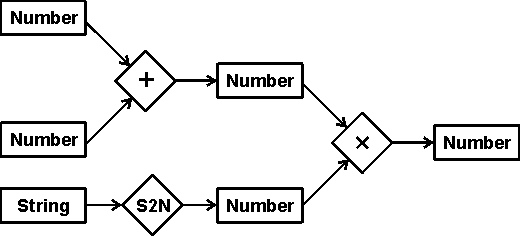
Figure 13. A dataflow graph
For numeric computations, dataflow graphs have little advantage over the algebraic notation used in common programming languages. Figure 13, for example, would correspond to an assignment statement of the following form:
X = (A + B) * S2N(C)
Graphic notations are more often used in an
Integrated Development Environment (IDE) for linking multiple programs to form a complete system. When dataflow graphs are supplemented with a graphic method for specifying conditions, such as
if-then-else, and a way of defining recursive functions, they can form a complete programming language, similar to
functional programming languages such as Scheme and ML.
Petri nets, first introduced by Carl Adam Petri (1962), are the most widely-used formalism that combines marker passing with procedures. Like dataflow diagrams, Petri nets have passive nodes, called places, and active nodes, called transitions. In addition, they have a set of rules for marking places with dots, called tokens, and for executing or firing the transitions. To illustrate the flow of tokens, Figure 14 shows a Petri net for a bus stop where three tokens represent people waiting and one token represents an arriving bus.

Figure 14. Petri net for a bus stop
At the upper left of Figure 14, each of the three tokens represents one person waiting at the bus stop. The token at the upper right represents an arriving bus. The transition labeled Bus stops represents an event that fires by removing the token from the arriving place and putting a token in the waiting place. When the bus is waiting, the transition labeled One person gets on bus is enabled because it has at least one token in both of its input places. It fires by first removing one token from both of its input places and putting one token in both of its output places (including the Bus waiting place from which one token had just been removed). As long as the bus is waiting and there are more people waiting, that transition can keep firing. It stops firing when either there are no more people waiting or the Bus starts transition fires by removing the token for the waiting bus and putting a token in the place for Bus leaving.
Each place in a Petri net represents a precondition for the transitions that use it as an input and a postcondition for the transitions that uses it as an output. A token in a place asserts that the corresponding condition is true. By removing a token from each input place, the firing of a transition retracts the assertions of its preconditions. By adding a token to each output place, the firing asserts that each of the postconditions has become true. Petri nets can be used to model or simulate physical events, as in the example of Figure 14. They can also be used to model processes that take place in computer hardware and software; they are especially useful for designing and modeling distributed parallel processes. In Figure 14, each token represents a single bit of information, but an extension, called colored Petri nets, can associate an arbitrary amount of data with each token (Jensen 1992). With such extensions, Petri nets can represent arbitrarily many dataflow graphs running in parallel or simulate the various marker passing algorithms used in semantic networks in the Quillian tradition.
Although dataflow graphs and Petri nets are not usually called semantic networks, similar techniques have been implemented in procedural semantic networks. At the University of Toronto, John Mylopoulos and his students and colleagues have implemented a series of semantic networks with attached procedures (Levesque & Mylopoulos 1979; Mylopoulos 1992). Their systems incorporate definitional networks for defining classes, assertional networks for stating facts, and procedures similar to the methods of object-oriented programming languages. For conceptual graphs, Sowa (1976, 1984) allowed some relation nodes to be replaced by actors, which are functions that form the equivalent of a dataflow graph.
Besides markers and procedures, the third method for making networks executable is to let them grow and change dynamically. Peirce and Selz could also be considered pioneers of that approach. Peirce said that the inference operations on existential graphs could be considered "a moving picture of thought." For schematic anticipation, Selz considered a schema to be the cause of the neural activity that generates a solution to a problem. Formally, transformations on networks can be defined without reference to the mechanisms that perform the transformations. In Petri nets, for example, the definition states that a transition may "fire" when each of its input nodes contains a token; the mechanism that performs the firing could be internal or external to the transition. For a computer implementation, it may be convenient to treat the networks as passive data structures and to write a program that manipulates them. For a cognitive theory, however, the transformations could be interpreted as network operations intitiated and carried out by the network itself. Either interpretation could be consistent with the same formal definitions.
5. Learning Networks
A learning system, natural or artificial, responds to new information by modifying its internal representations in a way that enables the system to respond more effectively to its environment. Systems that use network representations can modify the networks in three ways:
- Rote memory. The simplest form of learning is to convert the new information to a network and add it without any further changes to the current network.
- Changing weights. Some networks have numbers, called weights, associated with the nodes and arcs. In an implicational network, for example, those weights might represent probabilities, and each occurrence of the same type of network would increase the estimated probability of its recurrence.
- Restructuring. The most complex form of learning makes fundamental changes to the structure of the network itself. Since the number and kinds of structural changes are unlimited, the study and classification of restructuring methods is the most difficult, but potentially the most rewarding if good methods can be found.
Systems that learn by rote or by changing weights can be used by themselves, but systems that learn by restructuring the network typically use one or both of the other methods as aids to restructuring.
Commercially, rote memory is of enormous importance, since the world economy depends on exact record keeping. For such applications, information is sometimes stored in tables, as in relational databases, but networks are also used. Either representation could be converted to the other. For better efficiency and usability, most database systems add indexes to speed up the search, and they support query languages, such as SQL, which perform transformations to extract and combine the information necessary to answer a request. Since a learning system must be able to distinguish common features and exceptions among similar examples, another feature is essential: the ability to measure similarity and to search the database for networks that are similar, but not identical to any given example.
Neural nets are a widely-used technique for learning by changing the weights assigned to the nodes or arcs of a network. Their name, however, is a misnomer, since they bear little resemblance to actual neural mechanisms. Figure 15 shows a typical neural net, whose input is a sequence of numbers that indicate the relative proportion of some selected features and whose output is another sequence of numbers that indicate the most likely concept charcterized by that combination of features. In an application such as optical character recognition, the features might represent lines, curves, and angles, and the concepts might represent the letters that have those features.

Figure 15. A neural net
In a typical neural network, the structure of nodes and arcs is fixed, and the only changes that may occur are the assignments of weights to the arcs. When a new input is presented, the weights on the arcs are combined with the weights on the input features to determine the weights in the hidden layers of the net and ultimately the weights on the outputs. In the learning stage, the system is told whether the predicted weights are correct, and various methods of backpropagation are used to adjust the weights on the arcs that lead to the result.
Rote memory is best suited to applications that require exact retrieval of the original data, and methods of changing weights are best suited to pattern recognition. For more versatile and creative kinds of learning, some way of restructuring the network is necessary. But the number of options for reorganizing a network is so vast that the full range of possibilities is largely unexplored. Following are some examples:
- Patrick Winston (1975) used a version of relational graphs to describe structures, such as arches and towers. When given positive and negative examples of each type of structure, his program would generalize the graphs to derive a definitional network for classifying all the types that were considered.
- Haas and Hendrix (1983) developed the NanoKlaus system that would learn definitional networks by being told. Unlike Winston's system, which required a set of examples that included all significant features, NanoKlaus would carry on a dialog until it the features it had been told were sufficient to distinguish all the specified types.
- George Lendaris (1988a,b) developed a two-stage learning system that combined conceptual graphs with neural networks. Both stages used a neural network with backpropagation; but in the first stage, the inputs were features, and the outputs were concepts, as in Figure 15. In the second stage, each input represented a conceptual graph constructed from the concepts recognized by the first stage, and the outputs represented complex scenes described by those graphs. The two-stage system had a significantly reduced error rate and a faster learning rate than networks that matched features to scenes directly.
- In case-based reasoning (Kolodner 1993; Schank & Riesbeck 1994), the learning system uses rote memory to store various cases, such as medical diagnoses or legal disputes. For each case, it stores associated information, such as the prescribed treatment and its outcome or the legal argument and the court judgment. When a new case is encountered, the system finds those cases that are most similar to the new one and retrieves the outcome. Crucial requirements for the success of case-based reasoning are good similarity measures and efficient ways of searching for similar cases. To organize the search and evaluate similarity, the learning system must use restructuring to find common patterns in the individual cases and use those patterns as the keys for indexing the database.
- Basili, Pazienza, and Velardi (1993; 1996) developed methods of learning semantic patterns from a corpus of natural-language text. They started with a syntactic parser supplemented with a lexicon that had a limited amount of semantic information about the lexical patterns expected for each word. Then they used the parser to analyze the corpus and derive more detailed networks that represented the semantic patterns that occurred in the text. The system generalized those patterns to hypothesize better definitions of the lexical semantics for the words, which a linguist would verify before adding them to the lexicon. The system could then use the revised lexicon to reparse the corpus and further refine the definitions.
- Robert Levinson (1996) developed a general system for learning to play board games such as chess or checkers. For each kind of game, the system was given the rules for making legal moves, but no further information about which moves are good or bad and no information about how to determine whether a game is won or lost. During the learning phase, the system would play games against a tutor (usually another program that plays very well, such as Gnu Chess). At the end of each game, the tutor would inform the system of a win, loss, or draw.
For the learning phase, Levinson used a combination of rote learning as in case-based reasoning, restructuring to derive significant generalizations, a similarity measure based on the generalizations, and a method of backpropagation to estimate the value of any case that occurred in a game. For playing chess, the cases were board positions represented as graphs. Every position that occurred in a game was stored in a generalization hierarchy, such as those used in definitional networks. At the end of each game, the system used backpropagation to adjust the estimated values of each position that led to the win, loss, or draw. When playing a game, the system would examine all legal moves from a given position, search for similar positions in the hierarchy, and choose the move that led to a position whose closest match had the best predicted value.
These examples don't exhaust the all the ways of using restructuring, but they illustrate its potential for learning sophisticated kinds of knowledge.
6. Hybrid Networks
Many computer systems are hybrids, such as a combination of a database system for storing data, a graphics package for controlling the user interface, and a programming language for detailed computation. For knowledge representation, the Krypton system (Brachman et al. 1983) was a hybrid of a definitional network based on KL-ONE with an expert system that used a linear notation for asserting rules and facts. By the criteria used for calling Krypton a hybrid, most object-oriented programming languages could be considered hybrids: the C++ language, for example, is a hybrid of the procedural language C with a definitional language for defining types or classes. Systems are usually called hybrids if their component languages have different syntax. Conceptual graphs, for example, include a definitional component for defining types and an assertional component that uses the types in graphs that assert propositions. But CGs are not usually considered hybrids because the syntax of the definitional component is the same as the syntax of the assertional component.
The most widely used hybrid of multiple network notations is the Unified Modeling Language (UML), which was by designed by three authors, Grady Booch, Ivar Jacobson, and Jim Rumbaugh, who merged their competing notations (Rational Software 1997). Although UML is not usually called a semantic network, its notations can be classified according to the categories of semantic networks discussed in this article:
- Central to UML is a definitional network for defining object types. It includes the basic features of the Tree of Porphyry shown in Figure 1: type-subtype links, type-instance links, attributes that serve as differentiae for distinguishing a type from its supertype, and the inheritance of attributes from supertype to subtype.
- UML includes two kinds of executable networks that can be considered special cases of Petri nets: statecharts, which are special cases of Petri nets that do not support parallelism; and activity diagrams, which are almost identical to Petri nets, except that they do not use tokens to fire the transitions.
- The other networks in the UML family can be considered versions of relational graphs that are specialized for representing metalevel information. They include, for example, a version of entity-relationship diagrams (Chen 1976), which are relational graphs designed for expressing the cardinality constraints and parameter types of relations.
- The most general of all the UML notations is a linear notation called the Object Constraint Language (OCL). It is a version of first-order logic with a notation that has syntactic features similar to some O-O programming languages. As an example, the following OCL statement says that all parameters of an entity have unique names:
self.parameter->forAll(p1, p2 |
p1.name=p2.name implies p1=p2).
In OCL, self refers to the current entity being defined, and the names of functions are written after the entity to which they apply. In predicate calculus, the order would be interchanged: p1.name would be written name(p1). Following is a translation of the OCL statement to predicate calculus with the symbol #self representing the current entity.
( p1)(
p1)( p2)
p2)
((p1 parameter(#self)
parameter(#self)  p2
p2 parameter(#self)
parameter(#self)  name(p1)
name(p1)
=name(p2))
 p1=p2).
p1=p2).
This formula says that for every p1 and p2, if p1 is a parameter of self and p2 is a parameter of self and the name of p1 is equal to the name of p2, then p1 is equal to p2.
UML has been criticized for its lack of a formal definition, which has resulted in inconsistencies between its various notations (Kent et al. 1999). Work is underway to revise UML with formal definitions for all the notations. One approach would be to extend OCL with sufficient features to define all the other notations. Another possibility would be to design a propositional semantic network that was equivalent to full first-order logic plus metalevel extensions and use it to define everything in UML.
7. Graphic and Linear Notations
Graph notations and linear notations can express logically equivalent information, but with different syntactic conventions. The relational graph in Figure 4 and its translation to a formula in predicate calculus illustrate the differences between the two kinds of notations:
- Both notations have seven occurrences of relation names, such as isStagirite or teaches.
- They both have three occurrences of existential quantifiers, represented by three branching lines in the graph and by (
 x), (
x), ( y), and (
y), and ( z) in the formula.
z) in the formula.
- The major difference lies in the way the connections from the quantifiers to the relations are shown: each line is directly connected to the relations, but 13 occurrences of the variables x, y, and z are scattered throughout the formula.
The chief advantage of graph notations is the ability to show direct connections. Linear notations must rely on repeated occurrences of variables or names to show the same connections.
As another example, Petri nets, which are usually expressed in a graphic notation, are formally equivalent to a notation called linear logic. Although Petri nets and linear logic were independently developed by different researchers for different purposes, a commonly used version of Petri nets happens to be isomorphic to a commonly used version of linear logic (Troelstra 1992). Following is a translation of the Petri net of Figure 14 to that version of linear logic:
BusStops:
BusArriving  BusWaiting
BusWaiting
OnePersonGetsOnBus:
PersonWaiting & BusWaiting  PersonOnBus & BusWaiting
PersonOnBus & BusWaiting
BusStarts:
BusWaiting  BusLeaving
BusLeaving
InitialAssertions:
PersonWaiting. PersonWaiting. PersonWaiting. BusArriving.
Each arrow (

) in this example represents one of the transitions in the Petri net. The feature of linear logic that distinguishes it from classical first-order logic is the treatment of implication. For comparison, following is an application of
modus ponens in classical FOL, its replacement in linear logic, and the rule for firing a transition in Petri nets:
- Classical FOL. Given propositions p and q and an implication p
 q
q r
r s, conclude r and s. Everything that was previously true remains true.
s, conclude r and s. Everything that was previously true remains true.
- Linear logic. Given propositions p and q and an implication p&q
 r&s, conclude r and s and retract the truth of p and q.
r&s, conclude r and s and retract the truth of p and q.
- Petri nets. Given tokens in the places p and q and a transition p,q
 r,s, add one token to each of the places r and s and erase one token from each of the places p and q.
r,s, add one token to each of the places r and s and erase one token from each of the places p and q.
When the presence of a token in a place of a Petri net is intepreted as meaning the truth of the corresponding proposition, the rule for firing a transition is equivalent to using an implication in linear logic. Therefore, any collection of implications and assertions in linear logic can be represented by a Petri net, and any proof in linear logic corresponds to an execution of the Petri net.
One of the major arguments for graphic notations is human readability, but proponents of linear notations often argue that their notations are also highly readable. Each rule in linear logic, for example, is quite readable, but the relationships between rules are not as immediately readable as the direct connections in the Petri net.
As an example, consider the proposition BusWaiting, which is represented by a single place in the Petri net with two inputs and two outputs. That fact can be seen immediately from Figure 14, but a reader would have to search through all of the rules in the linear logic example to verify that the name BusWaiting occurs four times. As examples become larger, any notation become more difficult to read, but the graphic notations still have an advantage over linear notations. Petri nets have been implemented with many thousands of nodes, but it is always possible to look at any node and see immediately how many inputs and outputs it has and where they are linked.
Besides readability, graphic notations often have heuristic value in helping human readers (either students or researchers) to discover patterns that would be difficult or impossible to see in the linear form. The reason why Peirce called his existential graphs "the logic of the future" was not so much their readability as the direct insight they provided into the structure of proofs. With EGs, Peirce invented the simplest and most elegant rules of inference ever developed for any version of logic. Peirce's rules, which he discovered in 1897, are a simplification and generalization of the rules of natural deduction that Gentzen (1935) reinvented many years later. Even today, Peirce's rules lead to insights that have eluded logicians for many years. As an example, Larry Wos (1988) listed 33 unsolved research problems in automated reasoning, of which problem 24 asks about the relationship between proofs using Gentzen's rules for clauses and his rules of natural deduction:
Is there a mapping between clause representation and natural-deduction representation (and corresponding inference rules and strategies) that causes reasoning programs based respectively on the two approaches or paradigms to attack a given assignment in an essentially identical fashion?
The answer follows from two theorems that are easy to prove when expressed in Peirce's notation (Sowa forthcoming):
- Any proof by Gentzen's system of natural deduction can be converted automatically to a proof by Peirce's rules and vice versa.
- Any proof derived by a resolution theorem prover in clause form can be converted to a proof using Peirce's rules by negating each step, reversing the order, and writing each step as an existential graph.
Some very good logicians had been working on this problem for years, but they couldn't see the solution because they were using predicate calculus, which is based on Peirce's algebraic notation. In Peirce's graph notation, the answer is obvious.
References
The following five volumes provide a continuous overview of semantic networks in artificial intelligence from the early days to the 1990s. The first two include semantic network systems along with other approaches; the last three are exclusively devoted to semantic nets. The first three illustrate a wide range of historically interesting systems that often exhibit the fundamental principles more clearly than later systems, in which the basic structures are overlaid with more sophisticated, but more complex layers of detail. The last two books present systems and techniques that continue to be developed and applied in the 21st century.
- National Physical Laboratory (NPL) (1961) International Conference on Machine Translation of Languages and Applied Language Analysis, Her Majesty's Stationery Office, London.
- Minsky, Marvin, ed. (1968) Semantic Information Processing, MIT Press, Cambridge, MA.
- Findler, Nicholas V., ed. (1979) Associative Networks: Representation and Use of Knowledge by Computers, Academic Press, New York.
- Sowa, John F., ed. (1991) Principles of Semantic Networks: Explorations in the Representation of Knowledge, Morgan Kaufmann Publishers, San Mateo, CA, 1991.
- Lehmann, Fritz, ed. (1992) Semantic Networks in Artificial Intelligence, Pergamon Press, Oxford. Also published as a special issue of Computers and Mathematics with Applications 23:6-9.
The following references are cited in the text. Many of them are articles published in one of the above volumes.
Allerton, D. J. (1982) Valency and the English Verb, Academic Press, New York.
Basili, Roberto, Maria Teresa Pazienza, & Paola Velardi (1993) "Acquisition of selectional patterns from sublanguages," Machine Translation 8.
Basili, Roberto, Maria Teresa Pazienza, & Paola Velardi (1996) "An empirical symbolic approach to natural language processing," Artificial Intelligence 85, 59-99.
Brachman, Ronald J. (1979) "On the epistemological status of semantic networks," in Findler (1979) 3-50.
Brachman, Ronald J., Richard E. Fikes, & Hector J. Levesque (1983) "Krypton: A functional approach to knowledge representation," IEEE Computer, vol. 16, no. 10, pp. 67-73.
Brachman, Ronald J., Deborah L. McGuinness, Peter F. Patel-Schneider, Lori A. Resnick, & Alex Borgida (1991) "Living with Classic: when and how to use a KL-ONE-like language," in Sowa (1991) pp. 401-456.
Ceccato, Silvio (1961) Linguistic Analysis and Programming for Mechanical Translation, Gordon and Breach, New York.
Chen, Peter Pin-Shan (1976) "The entity-relationship model toward a unified view of data," ACM Transactions on Database Systems 1:1, pp. 9-36.
toward a unified view of data," ACM Transactions on Database Systems 1:1, pp. 9-36.
Fahlman, Scott E. (1979) NETL: A System for Representing and Using Real-World Knowledge, MIT Press, Cambridge, MA.
Fillmore, Charles J. (1968) "The case for case" in E. Bach & R. T. Harms, eds., Universals in Linguistic Theory, Holt, Rinehart and Winston, New York, 1-88.
Frege, Gottlob (1879) Begriffsschrift, English translation in J. van Heijenoort, ed. (1967) From Frege to Gödel, Harvard University Press, Cambridge, MA, pp. 1-82.
Gentzen, Gerhard (1935) "Untersuchungen über das logische Schließen," translated as "Investigations into logical deduction" in The Collected Papers of Gerhard Gentzen, ed. and translated by M. E. Szabo, North-Holland Publishing Co., Amsterdam, 1969, pp. 68-131.
Haas, Norman, & Gary G. Hendrix (1983) "Learning by being told," in R. S. Michalski, J. G. Carbonell, & T. M. Mitchell, Machine Learning, Tioga Publishing Co., Palo Alto, 405-427.
Hays, David G. (1964) "Dependency theory: a formalism and some observations," Language 40(4), 511-525.
Hendler, James A. (1987) Integrating Marker Passing and Problem Solving, Lawrence Erlbaum Associates, Hillsdale, NJ.
Hendler, James A. (1992) "Massively-parallel marker-passing in semantic networks," in Lehmann (1992) pp. 277-291.
Hendrix, Gary G. (1975) "Expanding the utility of semantic networks through partitioning," in Proc. IJCAI-75, 115-121.
Hendrix, Gary G. (1979) "Encoding knowledge in partitioned networks," in Findler (1979) pp. 51-92.
Jensen, Kurt (1992) Coloured Petri Nets, vol. 1, Springer-Verlag, Berlin.
Kamp, Hans (1981) "Events, discourse representations, and temporal references," Langages 64, 39-64.
Kamp, Hans, & Uwe Reyle (1993) From Discourse to Logic, Kluwer, Dordrecht.
Kent, Stuart, Andy Evans, & Bernhard Rumpe, eds. (1999) UML Semantics FAQ, http://www.cs.ukc.ac.uk/pubs/1999/977/content.pdf
Klein, Sheldon, & Robert F. Simmons (1963) "Syntactic dependence and the computer generation of coherent discourse," Mechanical Translation 7.
Kolodner, Janet L. (1993) Case-Based Reasoning, Morgan Kaufmann Publishers, San Mateo, CA.
Lendaris, George G. (1988a) "Neural networks, potential assistants to knowledge engineers," Heuristics 1:2.
Lendaris, George G. (1988b) "Conceptual graph knowledge systems as problem context for neural networks," Proc. ICNN-88, San Diego.
Levesque, Hector, & John Mylopoulos, "A procedural semantics for semantic networks," in Findler (1979) pp. 93-120.
Levinson, Robert A. (1996) "General game-playing and reinforcement learning," Computational Intelligence 12:1 155-176.
Maida, Anthony S., & Stuart C. Shapiro (1982) "Intensional concepts in propositional semantic networks," Cognitive Science 6:4, 291-330.
Masterman, Margaret (1961) "Semantic message detection for machine translation, using an interlingua," in NPL (1961) pp. 438-475.
Mel'čuk, Igor A. (1973) "Towards a linguistic 'Meaning Text' model,' in F. Kiefer, ed., Trends in Soviet Theoretical Linguistics, Reidel, Dordrecht, pp. 35-57.
Text' model,' in F. Kiefer, ed., Trends in Soviet Theoretical Linguistics, Reidel, Dordrecht, pp. 35-57.
Mylopoulos, John (1992) "The PSN tribe," in Lehmann (1992) 223-241.
Newell, Allen, & Herbert A. Simon (1972) Human Problem Solving, Prentice-Hall, Englewood Cliffs, NJ.
Peano, Giuseppe (1889) Aritmetices principia nova methoda exposita, Bocca, Torino. Excerpt translated as Principles of mathematics presented by a new method in van Heijenoort (1967) pp.83-97.
Peter of Spain or Petrus Hispanus (circa 1239) Summulae Logicales, edited by I. M. Bocheński, Marietti, Turin, 1947.
Peirce, Charles Sanders (1880) "On the algebra of logic," American Journal of Mathematics 3, 15-57.
Peirce, Charles Sanders (1885) "On the algebra of logic," American Journal of Mathematics 7, 180-202.
Peirce, Charles Sanders (1909) Manuscript 514, with commentary by J. F. Sowa, available at http://www.jfsowa.com/peirce/ms514.htm
Porphyry, On Aristotle's Categories, translated by S. K. Strange, Cornell University Press, Ithaca, NY, 1992.
Rational Software (1997) UML Semantics, http://www.rational.com/media/uml/resources/media/ad970804_UML11_Semantics2.pdf
Rieger, Chuck (1976) "An organization of knowledge for problem solving and language comprehension," Artificial Intelligence 7:2, 89-127.
Roberts, Don D. (1973) The Existential Graphs of Charles S. Peirce, Mouton, The Hague.
Schank, Roger C., ed. (1975) Conceptual Information Processing, North-Holland Publishing Co., Amsterdam.
Schank, Roger C. (1982) Dynamic Memory, Cambridge University Press, New York.
Schank, Roger C., & Larry G. Tesler (1969) "A conceptual parser for natural language," Proc. IJCAI-69, 569-578.
Schank, Roger C., & Robert P. Abelson (1977) Scripts, Plans, Goals and Understanding, Lawrence Erlbaum Associates, Hillsdale, NJ.
Schank, Roger C., Alex Kass, & Christopher K. Riesbeck (1994) Inside Case-Based Explanation, Lawrence Erlbaum Associates, Hillsdale, NJ.
Shapiro, Stuart C. (1971) "A net structure for semantic information storage, deduction and retrieval," Proc. IJCAI-71, 512-523.
Shapiro, Stuart C. (1979) "The SNePS semantic network processing system," in Findler (1979) pp. 263-315.
Shapiro, Stuart C., & William J. Rapaport (1992) "The SNePS family," in Lehmann (1992) pp. 243-275.
Selz, Otto (1913) Über die Gesetze des geordneten Denkverlaufs, Spemann, Stuttgart.
Selz, Otto (1922) Zur Psychologie des produktiven Denkens und des Irrtums, Friedrich Cohen, Bonn.
Simon, Herbert A. (1981) "Otto Selz and information-processing psychology," in N. H. Frijda A. D. de Groot, eds., Otto Selz: His Contribution to Psychology, Mouton, The Hague.
Somers, Harold L. (1987) Valency and Case in Computational Linguistics, Edinburgh University Press, Edinburgh.
Sowa, John F. (1976) "Conceptual graphs for a database interface," IBM Journal of Research and Development 20:4, 336-357.
Sowa, John F. (1984) Conceptual Structures: Information Processing in Mind and Machine, Addison-Wesley, Reading, MA.
Sowa, John F. (2000) Knowledge Representation: Logical, Philosophical, and Computational Foundations, Brooks/Cole Publishing Co., Pacific Grove, CA,
Sowa, John F. (forthcoming) "Converting a proof by a resolution theorem prover to a proof by natural deduction."
Steele, James, ed. (1990) Meaning-Text Theory, University of Ottawa Press, Ottawa.
Tesnière, Lucien (1959) Éléments de Syntaxe Structurale, 2nd edition, Librairie C. Klincksieck, Paris, 1965.
Troelstra, Anne Sjerp (1992) Lectures on Linear Logic, CSLI, Stanford, CA.
Tulving, Endel (1972) "Episodic and semantic memory," in E. Tulving & W. Donaldson, eds., Organization of Memory, Academic Press, New York.
Wilks, Yorick, & Dan Fass (1992) "The preference semantics family," in Lehmann (1992) pp. 205-222.
Winston, Patrick Henry, (1975) "Learning structural descriptions from examples," in P. H. Winston, ed., The Psychology of Computer Vision, McGraw-Hill, New York, 157-209
Woods, William A. (1975) "What's in a link: foundations for semantic networks," in D. G. Bobrow & A. Collins, eds. (1975) Representation and Understanding, Academic Press, New York, pp. 35-82.
Woods, William A., & James G. Schmolze (1992) "The KL-ONE Family," in Lehmann (1992) pp. 133-177.
Send comments to John F. Sowa.









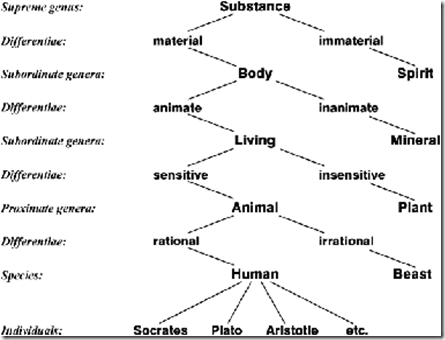



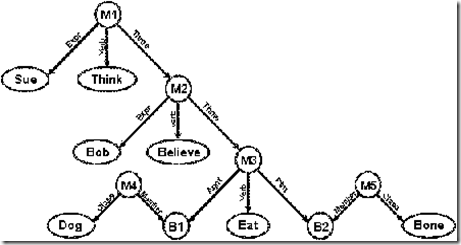
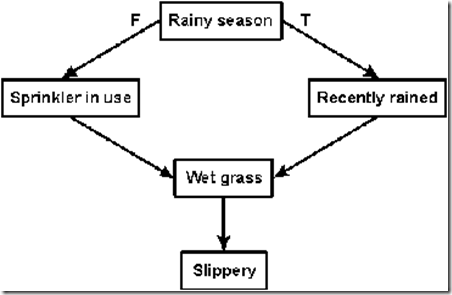
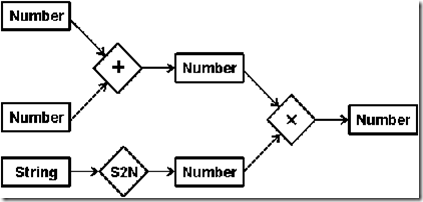
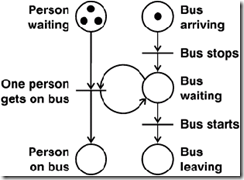
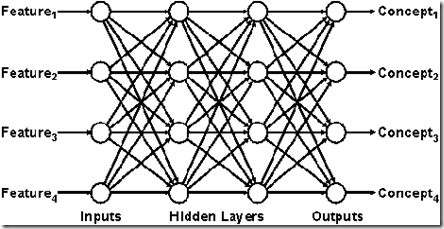

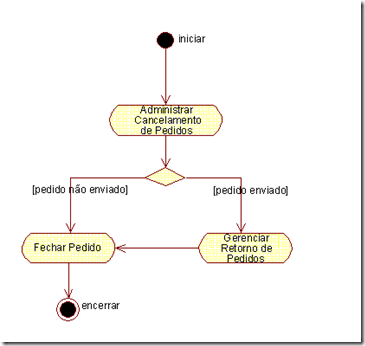

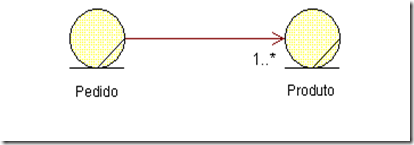
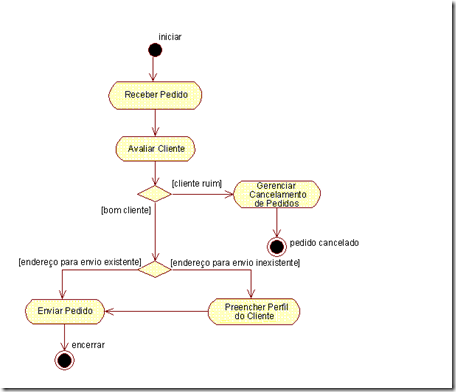
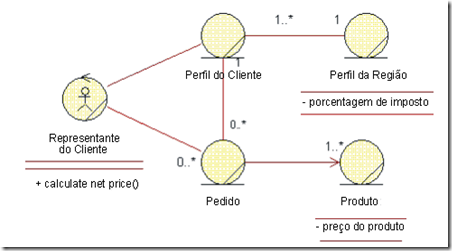


























 a giant semantic network that spans the entire Internet.
a giant semantic network that spans the entire Internet. 
 x)(
x)( teaches(x,y)
teaches(x,y)  , implication
, implication  , and the universal quantifier
, and the universal quantifier  , are more difficult to express because they require some method for demarcating the scope
, are more difficult to express because they require some method for demarcating the scope 

 for the agent-verb relation or an arrow marked with o for object. He replaced the verb eat with one of his primitive acts ingest; he replaced adverbs like greedily with adjective forms like greedy; and he added the linked arrows marked with d for direction to show that the bone goes from some unspecified place into the dog (the subscript 1 indicates that the bone went into the same that who ingested it).
for the agent-verb relation or an arrow marked with o for object. He replaced the verb eat with one of his primitive acts ingest; he replaced adverbs like greedily with adjective forms like greedy; and he added the linked arrows marked with d for direction to show that the bone goes from some unspecified place into the dog (the subscript 1 indicates that the bone went into the same that who ingested it). 




 q1, ..., qm
q1, ..., qm



 parameter(#self)
parameter(#self)  r,s, add one token to each of the places r and s and erase one token from each of the places p and q.
r,s, add one token to each of the places r and s and erase one token from each of the places p and q.